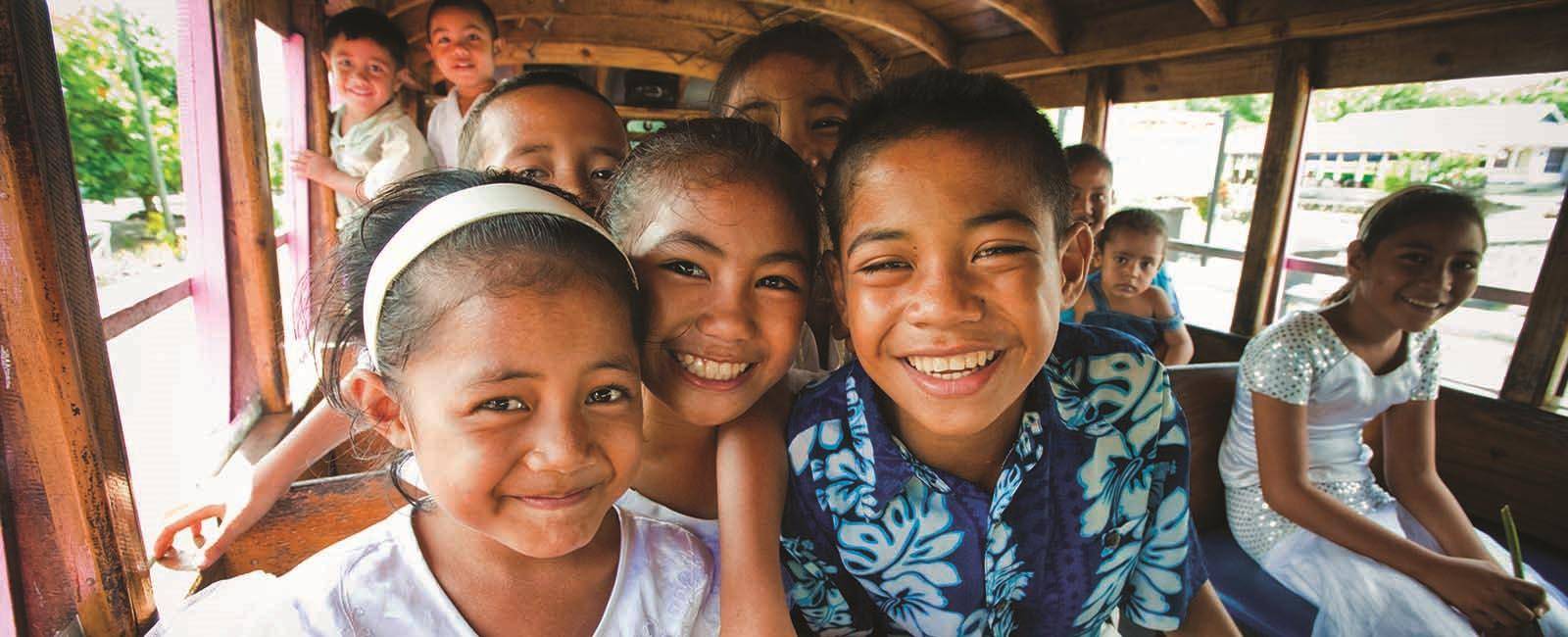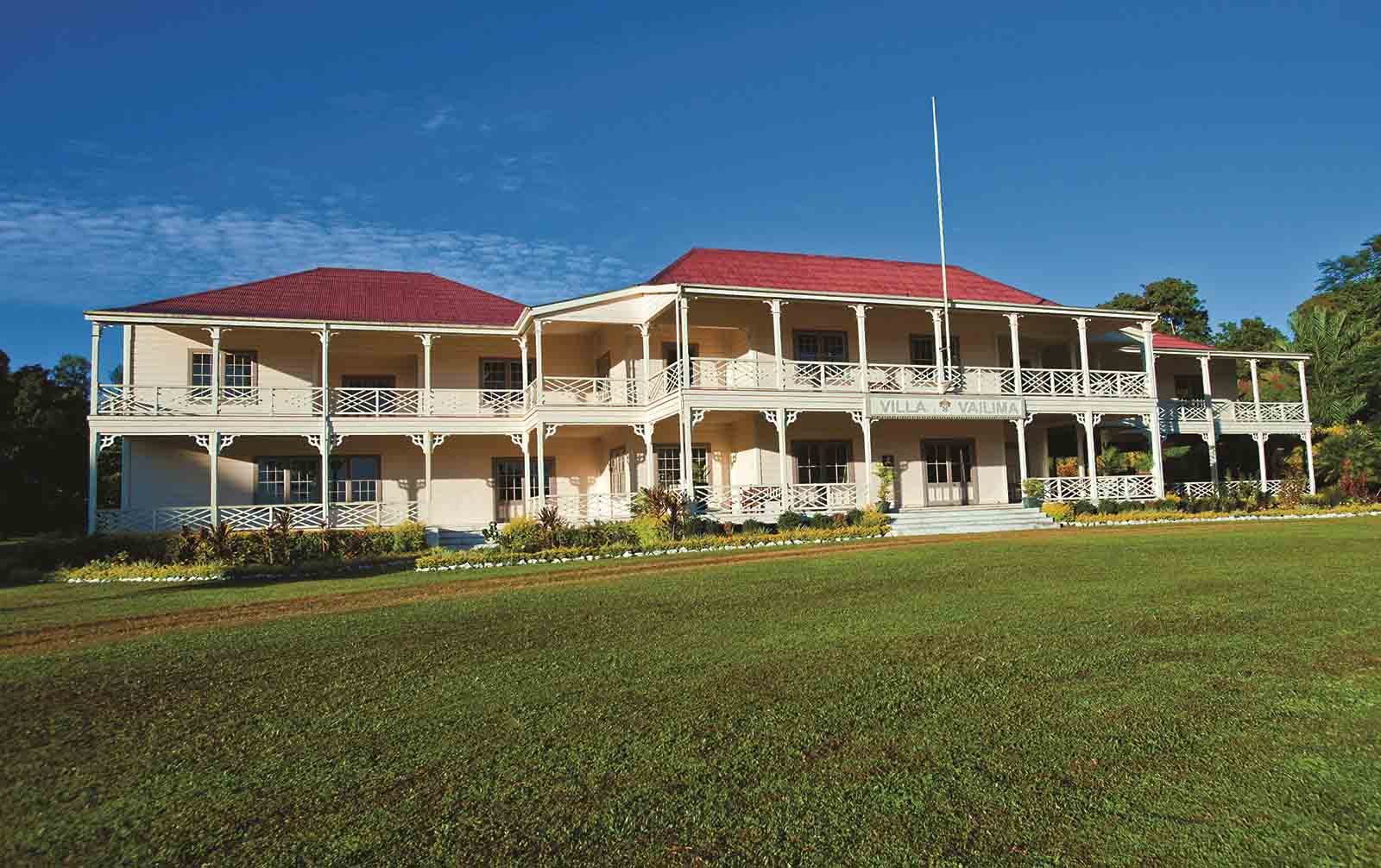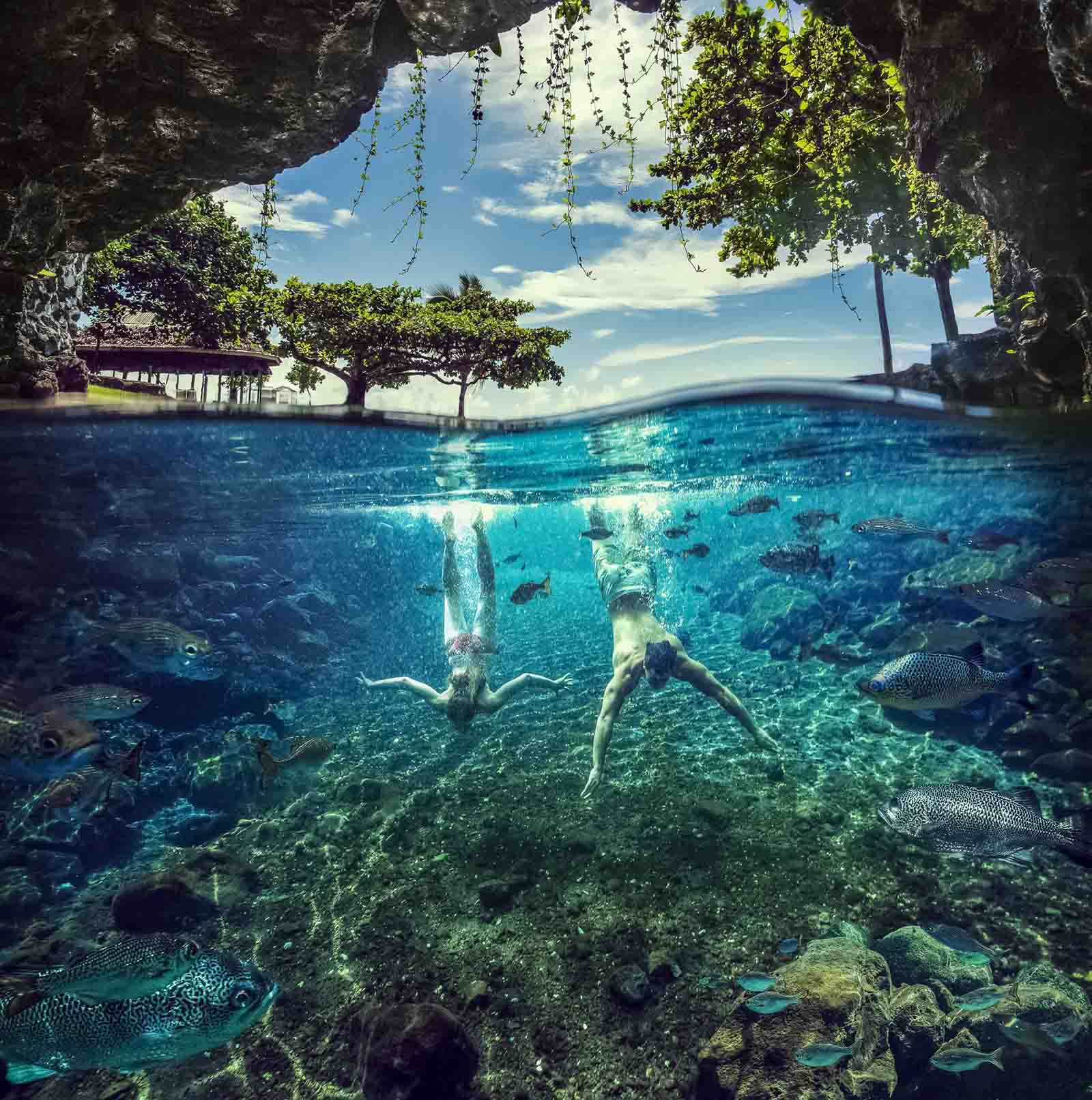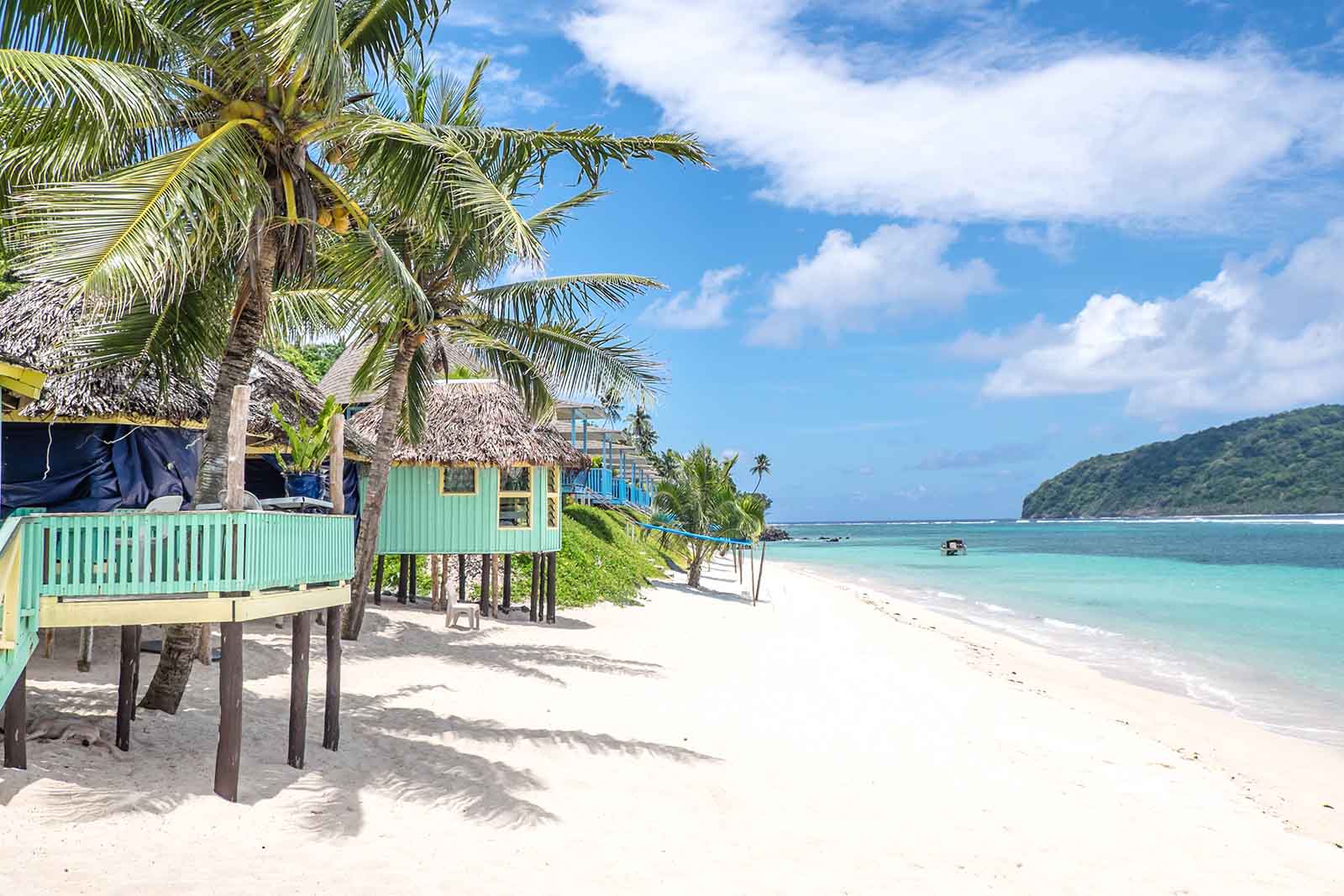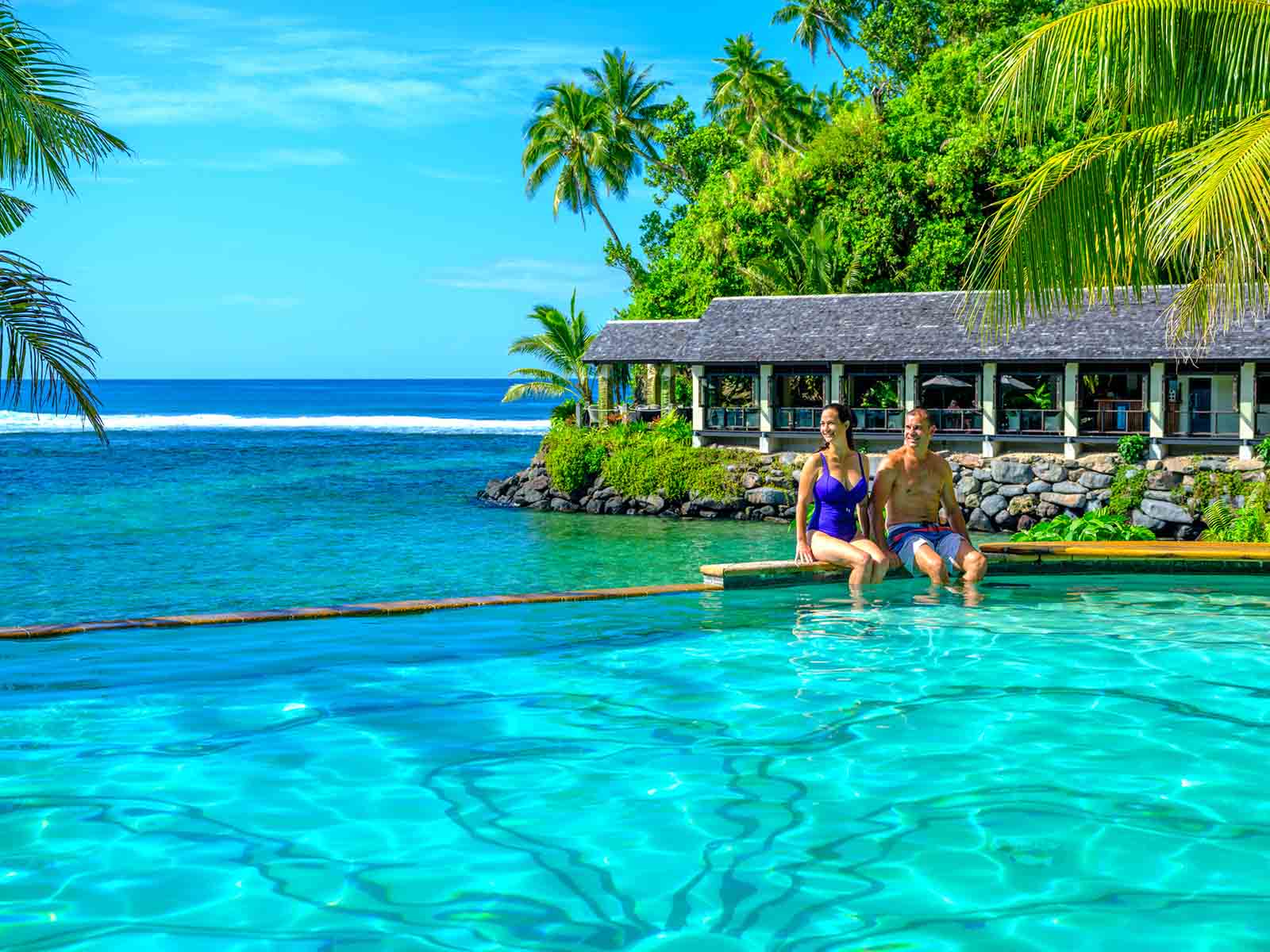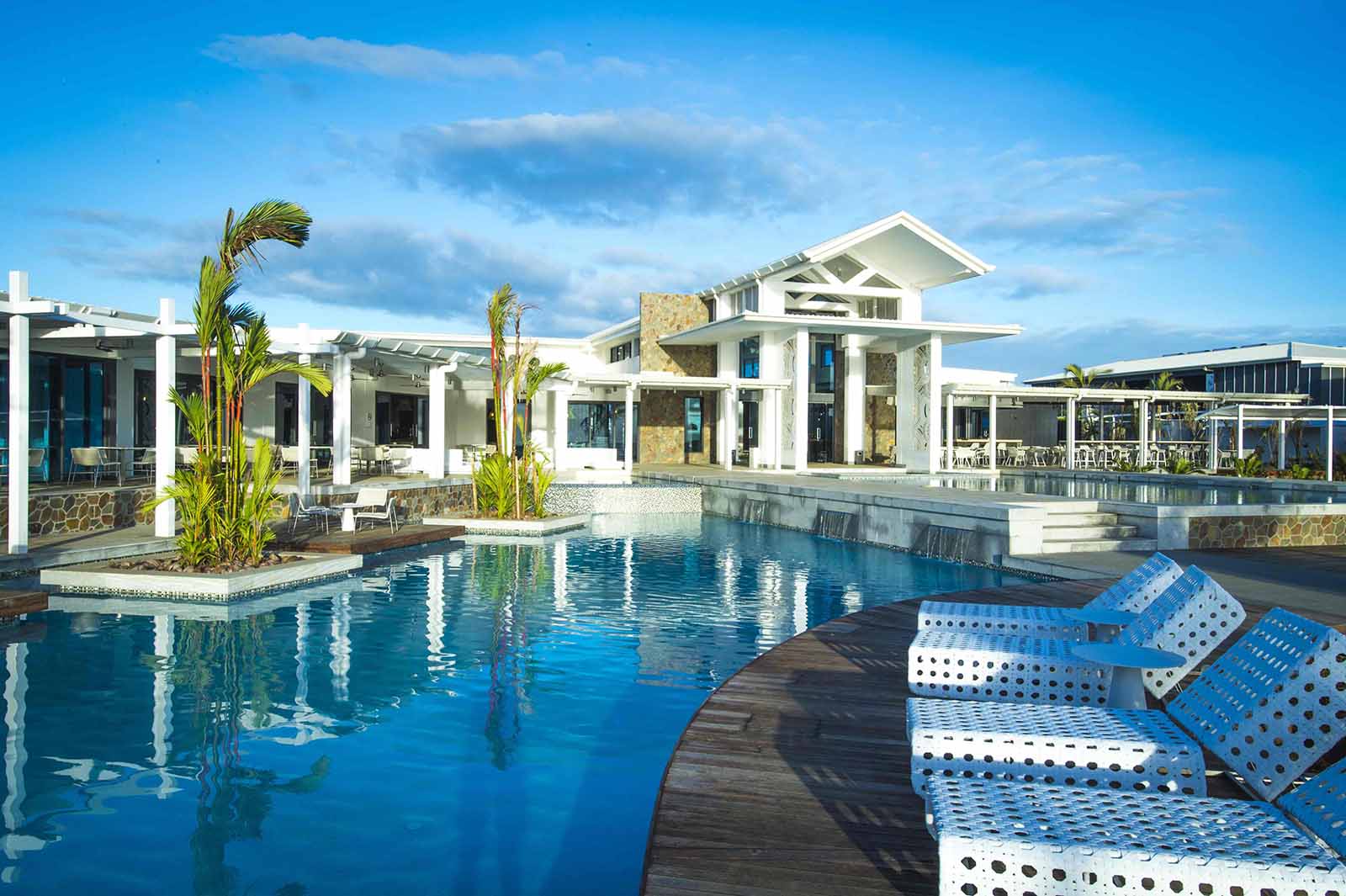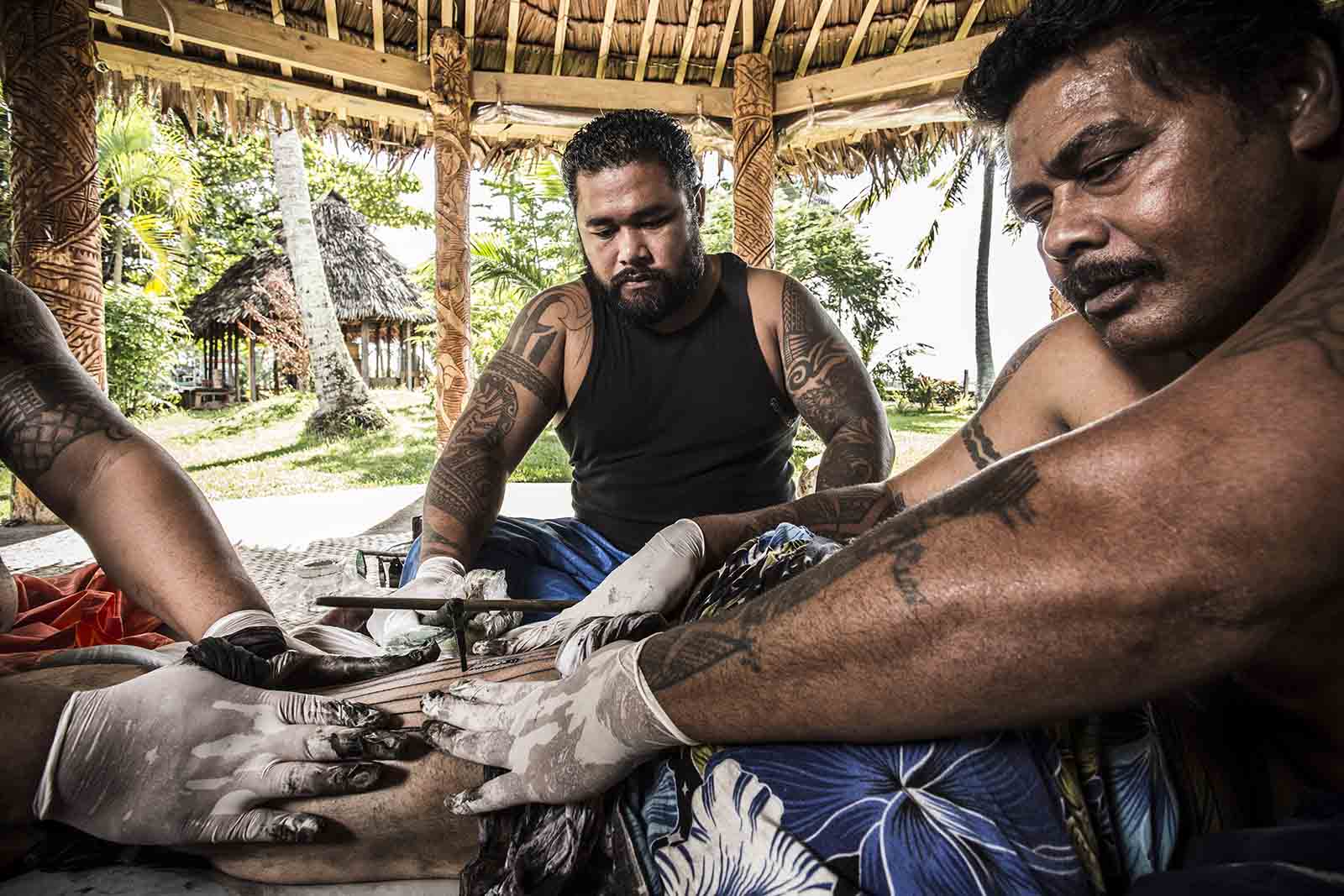
Samoans say they are the happiest people on Earth and after a week there I’m not going to argue. Immediately after we landed, we were welcomed by a group of musicians serenading visitors in the airport arrivals hall – at 7am. Yes, the night flight from Brisbane arrives just in time for breakfast and time to plan a day of discovery beginning with a tour of Apia, the capital of Samoa on the island of Upolu, and a visit to the Cultural Village for an introduction to Fa’a Samoa – ‘the Samoan way’.
Here's our travel guide to exploring Samoa:
Culture
Music and dance are integral to the Samoan way. Another welcome committee was waiting at Taumeasina Resort with a musical serenade. This time it was performed by resort staff and followed with a cool drink and presentation of a floral ‘lei’. Taumeasina runs daily shuttles to the city centre where a cultural tour can begin. Music is playing once again at the Cultural Village where Chris Solomona has been guiding visitors in the Samoan way for years. The tour is free and takes place daily, but any fears of commercialisation you may have can be quickly dispelled - the participants don’t get paid, but a donation is appreciated to help maintain the facilities and cover the costs of food and materials – each visitor gets to make a plate from a palm frond, eat food cooked in an umu (hot stone covered pit oven) and watch while the inner bark from a tree is transformed into a soft fabric.
There’s a more intimate demonstration of the Samoan art of traditional Ta Tau, or tattooing, observed under strict protocols as this is a painstaking skill, and you can take that literally, with powerful meaning. The traditional Samoan tattoo – from the waist to the knee – is a painful badge of honour that takes weeks, sometimes months, to complete at sessions of hours and days at a time, performed with a single tool (not an electric needle) and without any anaesthetic. While it is a great honour for men of a village to be tattooed in this way, there is also great shame if they fail to complete the whole process so it is not always encouraged in a village. There is also great responsibility then for the man to serve his village.
Family values remain strong in Samoa with generations of family members living as neighbours for life in the villages they were born. Sunday continues to be a day of rest, men rise early to cook the umu meal which the whole village shares and everyone goes to church – visitors welcome.
Nature
Local mythology and legend says Samoans descended from the gods and heavens to inhabit the islands and their natural beauty is, indeed, heavenly. Surrounded by a fringing reef the main islands are ringed by a necklace of pearl-white beaches, rich with inland forests and waterfalls, freshwater pools, taro and coconut plantations, and there are no deadly creatures to fear.
An introduction to the diversity of Samoa’s landscape starts only a few kilometres up the hill from Apia in Vailima and the Botanic Gardens that surround the former home (now a museum) of author Robert Louis Stevenson. Within the reserve there’s a waterfall and freshwater pool where you can take a dip just as Stevenson did in the 1890s.
The hike up Mt Vaea, to the peak where Stevenson is buried, is quite a different track to the manicured lawns and flowering plants of the gardens. The ‘easy’ way is at least an hour’s walk up a narrow bush track, fondly called the Road of Loving Hearts, that you don’t want to be doing past 9am in 30-degree heat. The ‘quick’ but harder way is steps all the way (estimated to take 30 minutes), arriving at the same vantage point and a panoramic view of Apia. I took the steps down.
Upolu island is only 75km long and 26km wide so it doesn’t take long to drive around the whole island even on the meandering coast road but it is worth cutting through the middle on the Cross Island Road if only to witness the marked change in temperature, terrain and drizzling rainfall during the traverse. It’s a welcome change from the tropical heat that is common all year round on the rest of the island.
From our south-side base at Seabreeze Resort near the village of Aufaga (and otherwise known as Paradise Cove) it’s not far to view the Sopoaga Waterfall from a lookout across the gorge or walk the bush trail to the Togitogiga Waterfall that cascades through several levels into swimming holes (there’s a bit of a leap of faith involved to get in the water). This is also a short walk to the entrance of O Le Pupu-Pue National Park where there are several hiking trails, including the three-hour (return) rainforest walk to the Peapea Caves, a lava tube cave formed thousands of years ago and home to a small bird called a peapea or white-rumped swiftlet.
Adventure
Also likely to get the adrenalin pumping is a dip in the Piula Cave Pool, about 45 minutes from Apia on the north coast road. It’s on land inside the grounds of the Piula Theological College in the village of Lufilufi and entry fees apply but it’s a surreal experience.
The freshwater spring flows from an old lava tube but so far professional divers have not been able to find its source. For swimmers it’s an eery feeling to explore a little way into the dark, and the creeps start to kick in as the rock walls get closer and the cave ceiling lower as the stream twists and turns underground. There’s supposed to be a second cave beyond but who’s game to keep going in the dark? Not me. It’s probably only seconds before I’m paddling back into the light and content instead to look for fish swimming in the sunny pool.
To Sua Trench is another swimming challenge. It’s not hard, but there are ropes across the trench now to stop people getting sucked out in strong currents, and that’s after you climb down into the 30-metre hole by a wooden stepladder. Above ground there are pretty gardens for picnics and barbecues, and a clifftop walk to see the cave from the ocean side.
Snorkelling is possible almost anywhere, sheltered in the lagoon and close to island outcrops. Just five minutes from Apia’s town centre Palolo Deep Marine Reserve is a protected pool to view coral and all sorts of fish species (BYO snorkel gear and beach towel) in a natural aquarium, about 100 metres offshore. There’s a minimal entry fee and a visit is best timed at high tide.
On the south side of the island Seabreeze Resort at Aufaga has its own natural mini aquarium between the beach and an island that stands only metres offshore – the ancient burial ground of a village chief. Although no one is allowed to set foot on the sacred ground it provides lots of idle viewing of small fish around the edges.
Just past the beach fales of Lalomanu, turtles swim in the deeper waters of the bay between the beach and Namua Island and it’s quite a treat to hitch a ride on a villager’s tinnie and spot the turtles on the way. There’s some snorkelling on the other side of the bay but the best times to see a turtle are the dawn and dusk feeding times. To do that you might want to stay on the island in a fale (you can book it), and the villagers will supply the food.
Kayaking, too, is a relaxing way to tour around the lagoons, from almost any location, just be mindful of the tides.
Food
It’s hard not to eat healthy food in Samoa as it is plentiful, from fresh seafood caught daily to fruit and vegetables grown locally. Root vegetables such as taro and breadfruit are everywhere (stop by the Marketi Fou in Apia to see the wide range available and sample some things you may not have seen before) or grab a coconut juice (in the coconut shell) from the drive-through market ‘Ahliki’ on Taufusi Street; oka (raw fish marinated in lemon, onion and coconut cream) is on most menus in resorts and cafés; and palusami (taro leaves baked in coconut cream) is served as part of the umu menu in the Cultural Village. Crayfish, snapper, tuna, mahi mahi and octopus are fresh from the market and palolo is a special fish delicacy. Pork and chicken are the prized meats served at an umu.
Samoan researchers have also found an innovative use for its prolific taro crops, whiskey, and a rum made from local sugar cane as well as a gin made from Polynesian plum are in the pipeline.
Where to stay
Seabreeze Resort, Upolu, south coast
Chris and Wendy Booth have done what many Australians dream of, created their own little piece of paradise on a tropical island. A builder in Brisbane for 30 years, Chris first went to Samoa – as many do – surfing with a mate, then with his son, then he took his partner Wendy and they started building Seabreeze Resort at Aufaga.
Now they run one of the world’s best resorts, according to the World Travel Awards where it was judged Samoa’s leading hotel for the sixth year in a row in 2018. Staff sing the welcome to guests (and farewell) at this adults-only resort of only 11 villas, one a self-contained Honeymoon Villa on its own headland, and all boasting decks with double hammocks, some with daybeds, a pool bar, overwater restaurant, rental cars on site and bespoke tours.
Good to know:
- Snorkel gear and glass bottom kayaks are available for the use of guests.
- Transfers are provided to and from Faleolo International Airport 50km (1.5hrs drive) away.
- Close to: To Sua Trench, Lalomanu Beach and Namua Island, Sopoaga and Togitogiga Waterfalls, Peapea Cave and the east side of Upolu.
- Don’t miss: Fiafia night on Friday.
Taumeasina Island Resort, Upolu, north coast
Taumeasina Island Resort is the newest on Upolu, open only two years and built on its own private island just five minutes (2.5km) from Apia and 45 minutes from Faleolo International Airport. Rooms have ocean views and there are two and three bedroom villas, three restaurants, two pools, spa, tennis court, kayaks, catamarans and a tour desk. There’s an activity program posted daily that includes everything from learning Samoan dance and how to tie a lavalava (sarong) to bingo and aqua aerobics.
Good to know:
- Close to: Apia, Palolo Marine Reserve, Vailima and Piula Cave Pool.
- Don’t miss: Fiafia night on Saturday.
- More options: There are places to suit all sorts. Corporate types might like Aggie Grey’s in the centre of Apia, with its meeting facilities, casino next door and walking distance to nightlife; on the other hand beach fales are made for adventurers – minimal facilities, but a comfy mattress and (maybe) a mosquito net for sleeping on the water’s edge with food supplied by the villagers or a laid-back café.
GETTING THERE
PLAN YOUR TRAVEL

